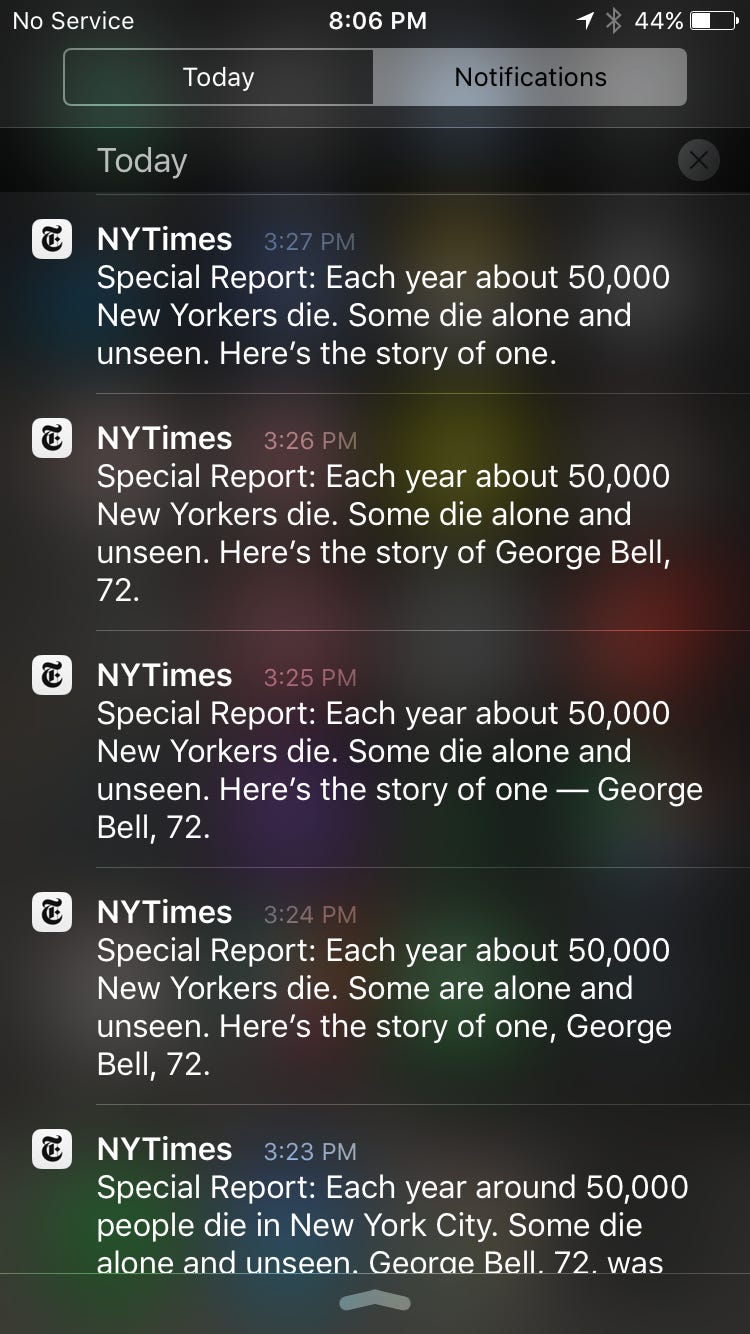Less
This is Western Coffee—notes on building the creative body. Last time: Ease. The whole series is here. Please share this email; you can sign up free below.
I worked for most of the ’10s at The New York Times, often handling how the top stories appeared on the home page, in the mobile apps, and in various forms of messaging—briefing newsletters, push notifications, even the now-extinct app for Apple Watch. I still remember an otherwise quiet 3 p.m.-to-11 shift in October 2011, a few months after I’d moved to New York and started the job, when—it usually wasn’t this cinematic—an editor ran up the stairs from the Business desk, shouted “Steve Jobs is dead!” and shot back down.
In those days, the language we emailed out for news alerts, and which ran as a headline across the top of the home page, would be written in the terse, capitalized style of a headline. “Steve Jobs, Founder of Apple, Dead at 56,” I wrote—or something like that—and as soon as the first version of the story had published, I hit send. I won a newsroom award for my dexterity on that story, which hit close to home: I’d been an Apple obsessive (that’s a thing that used to exist) even during the company’s humiliating mid-’90s slump, and watched the drama unspool on fan websites like Mac OS Rumors and As the Apple Turns—and then in Newsweek—as Jobs circled, returned to lead the company on an “interim” basis, and gradually breathed into it the life of a behemoth.
Few of my professional satisfactions have been as clear-cut and thrilling as grasping and describing big news in a limited word count, fast. When Dzhokhar Tsarnaev was found wounded in a boat in a backyard outside Boston four days after the marathon bombing in 2013, the news came minutes before the Friday 9 p.m. print deadline. All my superiors (of which there were, in the meaty Times hierarchy, many) vanished to redraw Page One. I instant-messaged back and forth with a single off-duty boss, crafting a new banner headline—all caps—and the single-column ”deck” hed below it and pushing it out live with the thrill of the person who knows he must, in this particular moment, do flawless work on the first try.
What all of this presentation copy had in common was a need for economy. Whether we were trying to keep a banner hed from wrapping to a second line or fitting everything you needed to know about a breaking story into the three lines of notification text that would show up uncut on an iPhone, there was seldom a word to spare. Minding a reverence for plain-language clarity that I don’t think is well understood outside The Times (or always executed well within it), we used both first and last names and, from 2015 or so onward, wrote in a more digestible prose rather than a headline style—which squeezed the word count with “and” and “the.” (This style has long since become standard, of course.) You simply would not believe how many tries it could take three or four news editors to write a good 15-word push notification.
Though I did not have a twice-weekly newsletter or a novel in progress in those days and thus could feel that I was failing in my vocation as a writer, or perhaps it had shifted, I see it all now as preparation. What you read here lacks the most essential tool of the writer—an editor—so I won’t lay it out as a paragon of saying more with less. But those sessions of honing—finding a way to put in two words what had been strung across three, over and over and over again—were a yearslong lesson in the difficulty of grace.
Kindly send me your thoughts, questions, and provocations: dmichaelowen@gmail.com. And say hi on Instagram, or let’s Peloton together: @leggy_blond.



